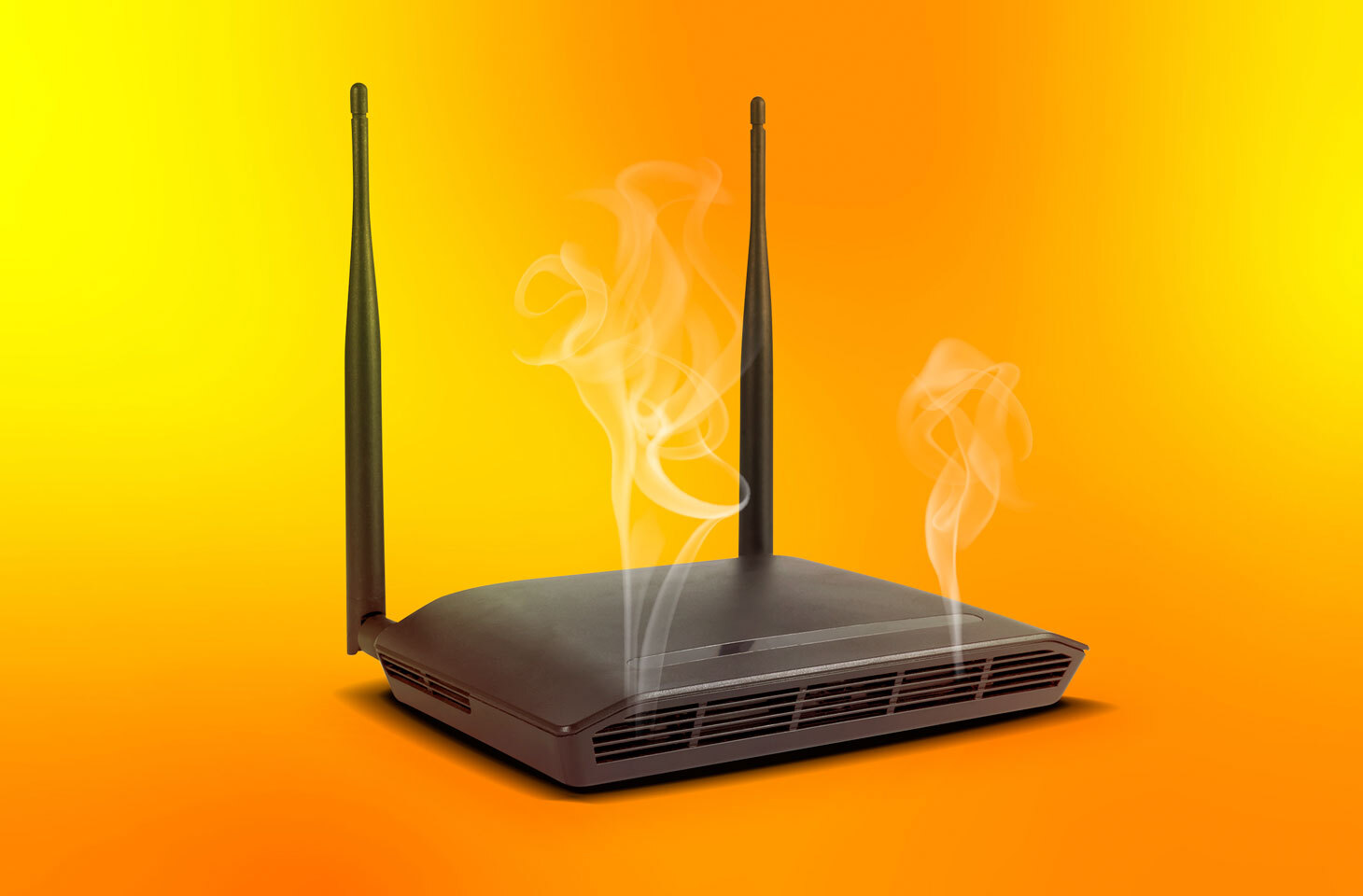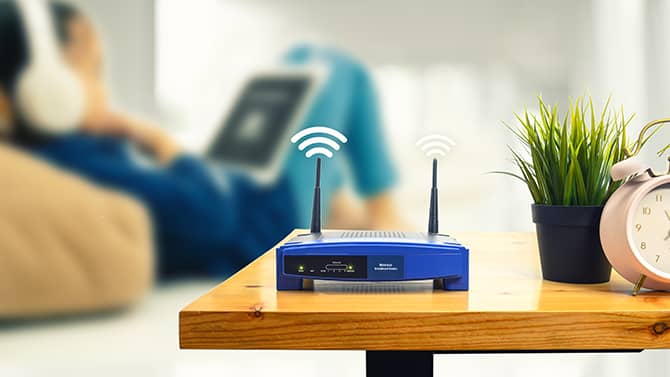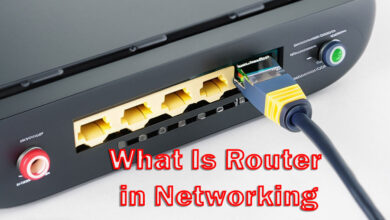Can Routers Get Viruses? Learn How to Protect Your Network

Routers can get viruses, which can compromise their security and functionality. Routers, like any other internet-connected device, are susceptible to viruses that can compromise their security and hinder their performance.
These viruses can infect a router through various means, such as malware-infected websites, malicious downloads, or even by exploiting vulnerabilities in the router’s firmware. Once infected, a router can suffer from issues such as a slowdown in internet speed, frequent disconnections, or unauthorized access to the network.
It is crucial to protect routers by regularly updating their firmware, using strong passwords, and installing reliable antivirus software. By taking these precautions, users can minimize the risk of their routers getting infected by viruses and ensure a secure network connection.

Credit: www.kaspersky.com
Introduction To Router Security
Routers and viruses: Can they become infected? Discover the basics of router security and the potential risks associated with router vulnerabilities. Stay informed and protect your network from potential threats.
Can Routers Get Viruses:
Router security is a crucial aspect of maintaining a safe and protected network. As more and more devices connect to the internet through routers, it becomes essential to understand the potential risks and vulnerabilities routers can face. In this section, we will explore the concept of router security and the measures you can take to safeguard your network.
Why Router Security Matters:
- Attackers can exploit router vulnerabilities to gain unauthorized access to your network.
- Compromised routers can be used to launch large-scale cyberattacks, affecting not only your devices but also those of others.
- Personal information and sensitive data transmitted over a compromised router can be intercepted and misused.
- Router security is vital for ensuring the integrity and confidentiality of your network.
Common Router Vulnerabilities:
- Default settings: Routers often come with default usernames and passwords, which are easily guessable and can be exploited by attackers.
- Outdated firmware: Failure to update router firmware can leave it exposed to known vulnerabilities that have been patched in newer versions.
- Weak encryption: Using weak encryption methods, such as WEP, instead of stronger options like WPA2, can make it easier for attackers to crack your network’s security.
- Inadequate authentication: Routers that lack two-factor authentication or strong password requirements are more susceptible to unauthorized access.
Best Practices For Router Security:
- Change default credentials: Always change the default usernames and passwords to unique and strong ones that are not easily guessable.
- Keep firmware updated: Regularly check for firmware updates from your router manufacturer and install them promptly to address any identified vulnerabilities.
- Use strong encryption: Set up your router to use the latest encryption protocols, such as WPA2, and avoid weaker options like WEP.
- Enable network segmentation: Consider segmenting your network into separate Wi-Fi networks for different purposes, like one for guests and another for your personal devices.
- Disable remote management: Unless necessary, disable remote management capabilities to prevent unauthorized access to your router’s settings.
By understanding the importance of router security and implementing best practices, you can significantly reduce the risk of your router being compromised. Protecting your network is a vital step in safeguarding your personal information and ensuring a safe online experience for all connected devices.
Understanding Router Vulnerabilities
Router vulnerabilities can pose a serious threat, but can routers get viruses? Understanding the potential risks and taking steps to secure your router is crucial in safeguarding your network from malicious attacks. Stay proactive in protecting your router against vulnerabilities to ensure a secure online experience.
Routers have become an essential part of our daily lives, providing us with a reliable and secure internet connection. But have you ever wondered if routers can get viruses? In this blog post, we will dive into the world of router vulnerabilities and explore the potential risks that these devices may face.
:
- Router firmware vulnerabilities: Just like any other computer device, routers also run on firmware, which is essentially the software that controls its operations. If this firmware becomes outdated or has security flaws, it can leave the router vulnerable to attacks.
- Default login credentials: Many routers come with default login credentials (username and password) set by the manufacturer. If users fail to change these credentials, it can make the router susceptible to unauthorized access.
- Weak or no encryption: Routers use encryption methods like WPA2 or WPA3 to secure the data transmitted wirelessly. However, weak or no encryption can expose the network to potential security breaches.
- Vulnerable ports: Routers have various ports for connecting devices and transferring data. If these ports have security vulnerabilities, they can be exploited by hackers for unauthorized access or spreading malware.
- Lack of regular updates: Manufacturers often release firmware updates for routers to patch security vulnerabilities and improve performance. However, if users neglect these updates, it can leave the router unprotected against new and evolving threats.
- Malicious firmware updates: In some cases, routers can be infected with malware through compromised firmware updates. These malware-infected updates can then go on to compromise the entire network.
By understanding these vulnerabilities, users can take proactive measures to safeguard their routers and networks from potential threats. Regularly updating router firmware, changing default login credentials, using strong encryption, and being cautious of suspicious firmware updates are crucial steps to ensure the security and functionality of routers.
Remember, when it comes to router security, vigilance is key. Stay informed, stay protected!
Types Of Router Attacks
Routers can indeed get viruses, and there are various types of attacks that can target them. These attacks include DNS hijacking, router phishing, firmware malware, and DDoS attacks, which can compromise the security and performance of the router. Stay vigilant and take precautions to protect your router from such threats.
Can Routers Get Viruses?
In today’s modern world, routers have become an essential component of our daily lives. We rely on them to connect our devices to the internet and ensure a seamless browsing experience. However, just like any other electronic device, routers are not immune to viruses and malware attacks.
In this blog post, we will explore the different types of router attacks that can jeopardize our online security.
:
Router attacks can take many forms, with each one posing a unique threat to our network security. Let’s take a closer look at some of the most common types of router attacks:
- DNS Hijacking: In this type of attack, hackers compromise a router’s Domain Name System (DNS) settings to redirect users to malicious websites. By controlling the DNS, attackers can intercept web traffic and gain access to sensitive information such as login credentials and financial details.
- Firmware Exploitation: Routers run on firmware, which is essentially their operating system. Hackers exploit vulnerabilities within the router’s firmware to gain unauthorized access and manipulate settings. This can lead to unauthorized users controlling the router, eavesdropping on network traffic, or even launching further attacks on connected devices.
- Brute Force Attacks: In a brute force attack, hackers attempt to guess the router’s password by systematically trying different combinations until they find the correct one. This can be achieved through automated scripts that can quickly run thousands of different password combinations, making it crucial to use strong and unique passwords to prevent such attacks.
- Denial of Service (DoS) Attacks: In a DoS attack, hackers overwhelm a router or its network with an excessive amount of traffic, causing it to become unresponsive and unavailable for legitimate users. This can disrupt network connectivity and render the router temporarily useless.
- Man-in-the-Middle (MitM) Attacks: In a MitM attack, hackers intercept the communication between a user and a website or service without their knowledge. By gaining control over the router, attackers can redirect network traffic to their own systems, enabling them to eavesdrop, modify, or steal sensitive information.
- Cross-Site Scripting (XSS): XSS attacks target vulnerabilities in web applications hosted on routers. Attackers inject malicious scripts into websites, which are then executed by unsuspecting users, allowing the attacker to steal information, install malware, or gain unauthorized access to the router.
- Wireless Network Attacks: Wireless routers are particularly susceptible to attacks targeting their wireless networks. Hackers can exploit weak security settings, such as weak passwords or outdated encryption protocols, to gain unauthorized access to the network and potentially compromise connected devices.
Remember, it is crucial to stay vigilant and take steps to protect your router from these attacks. Regularly updating firmware, using strong passwords, and being cautious about the websites you visit can go a long way in safeguarding your network and ensuring a secure online experience.
Stay tuned for our upcoming blog posts, where we will discuss practical tips to enhance the security of your router.
Can Routers Get Viruses?
Routers can indeed get viruses, which can compromise the security and performance of your network. It is important to regularly update your router’s firmware and use strong passwords to minimize the risk of infection.
Routers play a critical role in our internet-dependent lives, serving as the gateway to all our connected devices. But can routers get viruses? Let’s delve into this intriguing question and uncover the truth behind the potential vulnerability of routers to viral infections.
How Do Routers Function?
- Routers are the foundation of our home or office network, responsible for directing incoming and outgoing internet traffic.
- They create a local network, allowing multiple devices to connect and share internet access.
- Routers utilize firmware, which is essentially their operating system, to manage and control network traffic.
Are Routers Vulnerable To Viruses?
- Although routers primarily focus on traffic management, they can be susceptible to certain types of malware or viruses.
- Router vulnerabilities can arise due to outdated firmware, weak security configurations, or the exploitation of unpatched vulnerabilities.
- Viruses targeting routers can result in severe consequences, such as unauthorized access to network resources, data breaches, and compromised personal information.
Common Types Of Router Viruses
- Botnet viruses: These types of viruses turn your router into a “zombie” that can be remotely controlled by hackers without your knowledge.
- DNS hijacking: This method redirects your internet traffic to malicious websites, potentially leading to phishing attacks or the installation of malware on connected devices.
- Firmware malware: By infecting the router’s firmware, hackers can gain persistent access, monitor network traffic, and execute unauthorized actions.
How To Protect Your Router?
- Regularly update router firmware: Manufacturers release updates to address vulnerabilities. Make sure you install them promptly.
- Set strong login credentials: Change the default router password and use a complex combination of letters, numbers, and special characters.
- Enable encryption: Protect your wireless network by using WPA2 or WPA3 encryption protocols.
- Disable remote management: Prevent unauthorized access by disabling remote management features.
- Install a reputable security solution: Consider using a reliable antivirus or security software to protect your network from cyber threats.
Stay Safe And Secure
In today’s interconnected world, it’s crucial to remain vigilant and take precautions to protect our devices and networks. While routers can be vulnerable to viruses, by implementing the right security measures, you can safeguard your network and enjoy a worry-free online experience.
Remember, keeping your router’s firmware up to date and following best security practices will significantly reduce the risk of falling victim to router infections. Stay safe, stay secure!
How Routers Can Be Compromised
Routers can indeed be compromised by viruses, posing a significant security risk. These malicious entities can exploit vulnerabilities in the router’s firmware, allowing unauthorized access and potential data breaches. It is crucial to keep routers updated with the latest security patches to minimize the chances of infection.
:
Think of your router as the gatekeeper of your home network. It ensures that data flows smoothly between your devices and the internet. However, just like any other electronic device, routers are vulnerable to attacks. Here’s how routers can be compromised:
- Outdated Firmware: Routers run on firmware, which is essentially their operating system. If the firmware is not regularly updated, it leaves the router vulnerable to security flaws that hackers can exploit.
- Default Admin Credentials: Many users never change the default username and password when setting up their routers. Hackers can easily find lists of default credentials online and use them to gain unauthorized access to routers.
- Wi-Fi WEP or WPA Weaknesses: Older routers may still use the outdated WEP (Wired Equivalent Privacy) encryption or the more secure but still vulnerable WPA (Wi-Fi Protected Access) protocol. Weak encryption can be cracked by determined attackers.
- Remote Management Exploits: Some routers allow users to manage them remotely over the internet. If not properly secured, this feature can open up avenues for hackers to gain control of the router.
- Malware Infections: Just like computers and smartphones, routers can be infected with malware. This can happen if a device on the network gets infected and spreads the malware to the router.
- DNS Hijacking: Hackers can manipulate a router’s DNS (Domain Name System) settings to redirect users to malicious websites. This can lead to various security and privacy risks.
By understanding how routers can be compromised, you can take the necessary steps to protect your home network. Keep reading to learn more about router security and how to safeguard your devices.
Protection And Prevention
Routers can indeed get viruses, making protection and prevention crucial. Safeguard your network and devices by regularly updating your router’s firmware and using strong passwords.
Routers play a crucial role in our modern connected lives, serving as the gateway to the internet for all our devices. As such, it’s only natural to wonder if routers can get viruses. In this section, we’ll explore the measures you can take to protect your router and prevent it from becoming vulnerable to malicious attacks.
Secure Passwords:
- Using a strong, unique password for your router is the first line of defense against viruses and unauthorized access.
- Avoid common passwords or using default passwords that are easily guessable.
- Opt for a combination of uppercase and lowercase letters, numbers, and special characters to create a robust password.
Firmware Updates:
- Keeping your router’s firmware up to date is crucial as it often includes security patches that address vulnerabilities.
- Regularly check your router manufacturer’s website or the router’s admin interface for firmware updates.
- Install updates promptly to ensure your router has the latest security enhancements.
Firewall Activation:
- Activating the built-in firewall on your router can provide an essential layer of protection.
- The firewall helps block malicious traffic from entering your network, reducing the risk of viruses infecting your router or connected devices.
- Enable firewall settings in your router’s admin interface and make sure it is properly configured.
Network Segregation:
- Segregating your network into separate virtual LANs (VLANs) adds an extra layer of protection against viruses.
- By separating different devices (such as IoT devices, smart home devices, and laptops) into different VLANs, you can limit virus propagation within your network.
- This way, if one device becomes infected, the virus is less likely to spread to other devices.
Wi-Fi Encryption:
- Enabling strong Wi-Fi encryption mechanisms, such as WPA2 or WPA3, provides a secure connection between your devices and the router.
- It prevents unauthorized access to your network and helps safeguard against potential virus attacks.
- Verify encryption settings in your router’s admin interface and choose the highest level of encryption supported by your devices.
Guest Network Isolation:
- Many routers offer a guest network feature that allows visitors to connect to the internet without accessing your main network.
- Enabling guest network isolation ensures that devices connected to the guest network cannot communicate with devices on your primary network.
- This separation minimizes the risk of viruses spreading from guest devices to your network.
Disable Remote Administration:
- Disabling remote administration is an effective measure to protect against unauthorized access and potential virus infections.
- Remote administration allows control of your router’s settings from outside your network, so disabling it reduces the risk of exploitation.
- Check your router’s admin interface and make sure the remote administration feature is turned off.
Regular Monitoring:
- Regularly monitoring your router’s activity can help you detect any suspicious behavior or signs of a virus attack.
- Keep an eye on your router’s logs, review connected devices, and check for any unusual traffic patterns or unauthorized access attempts.
- Promptly investigate and take action whenever you notice anything out of the ordinary.
Antivirus Software:
- While routers themselves may not have antivirus software built-in, you can still protect your devices by installing antivirus software on each device connected to your network.
- Antivirus software helps detect and remove viruses that might try to exploit vulnerabilities in your router or connected devices.
- Ensure that each device has reliable antivirus software installed and regularly update it to stay protected.
User Education:
- Educating yourself and other users about safe online practices is a crucial aspect of router virus prevention.
- Promote awareness about avoiding suspicious downloads, clicking on unknown links, and practicing good internet hygiene.
- Stay vigilant and share knowledge to create a safer online environment for everyone connected to your network.
By implementing these protection and prevention measures, you can significantly enhance the security of your router and minimize the risk of virus infections. Protecting your router is not just about safeguarding your device, but also ensuring the safety and privacy of your entire network and the connected devices within it.
Stay proactive and stay secure!
Router Security Software
Router security software is essential in protecting against viruses, ensuring your router is safe from harmful malware and cyber threats. Safeguard your network with reliable and effective software solutions.
Router security software plays a crucial role in protecting your network from viruses and malicious threats. It acts as a shield, ensuring the safety of your connected devices and sensitive information.
Here are some key points to consider about router security software:
- Configuration and management: Router security software allows you to customize and manage network settings easily. This includes password protection, firewall configuration, and access control. These features enable you to create a secure environment for your network.
- Threat detection and prevention: Router security software continuously scans incoming and outgoing network traffic, actively searching for any potential threats. It can identify and block suspicious activities, such as malware, viruses, and phishing attacks, before they can infiltrate your network.
- Regular updates: Like any software, router security software requires periodic updates to stay effective against emerging threats. These updates include bug fixes, vulnerability patches, and new security features. Regularly updating your router security software ensures that you stay protected against the latest threats.
- Parental controls: Many router security software solutions offer built-in parental control features. With these controls, you can monitor and restrict access to certain websites or applications, providing a safer online experience for your children.
- Secure VPN connection: Some router security software includes a Virtual Private Network (VPN) feature. A VPN encrypts your internet traffic, making it virtually impossible for hackers to intercept and decipher your data. Using a VPN adds an extra layer of security to your network.
- Device scanning: Router security software can also conduct periodic scans of your connected devices, checking for any signs of infections or vulnerabilities. This feature helps you identify and remove any malware or potentially compromised devices on your network.
Investing in router security software is essential to protect your network from viruses and other threats. It provides features such as configuration options, threat detection, regular updates, parental controls, VPN support, and device scanning. By utilizing these security measures, you can ensure the safety and privacy of your network and connected devices.
Regular Firmware Updates
Regular firmware updates are essential to keep routers secure and protected against viruses. These updates ensure that any vulnerabilities are patched, keeping your network and data safe. Keep your router firmware up to date to prevent any potential risks.
Regular firmware updates are an essential part of keeping your router secure from viruses and other threats. Firmware is the software that runs on your router, controlling how it functions and ensuring its security. By regularly updating the firmware, you can stay one step ahead of potential vulnerabilities and protect your network.
Here are some key points to understand about regular firmware updates:
- Firmware updates often include important security patches, bug fixes, and performance improvements. By keeping your router’s firmware up to date, you can ensure that any known security vulnerabilities are patched, reducing the risk of viruses or malware infiltrating your network.
- Manufacturers release firmware updates to address new security threats as they arise. Hackers are constantly evolving their tactics, so it’s crucial to stay current with these updates to maximize your router’s protection against viruses.
- Firmware updates can also enhance your router’s overall performance and functionality. These updates often include new features and improvements that can improve your internet browsing experience and optimize your network’s performance.
- Updating firmware may require some technical know-how, but most manufacturers provide user-friendly tools and instructions to make the process as smooth as possible. Simply visit the manufacturer’s website, locate the firmware update for your specific router model, and follow the provided instructions.
- Some routers have an automatic update feature that can regularly check for and install firmware updates. Enabling this feature ensures that your router stays current without requiring manual intervention.
- It’s critical to back up your router’s settings before updating its firmware. This precautionary step will allow you to restore your previous settings if any issues occur during the update process.
- In addition to firmware updates provided by the manufacturer, open-source firmware options like DD-WRT and OpenWrt offer a wide range of features and security enhancements. These community-developed firmware options often have active development and regular updates, providing an alternative for those looking for additional customization and control over their router’s security.
- Regularly checking for firmware updates and promptly installing them is an essential aspect of keeping your router secure from viruses and other threats. Set a reminder to periodically check for updates or enable automatic updates to ensure optimal security and performance.
Remember, regular firmware updates are crucial to ensuring the security and performance of your router. By staying proactive and keeping your firmware up to date, you can minimize the risk of viruses and enjoy a safer, more efficient internet experience.
User Habits And Safe Practices
Routers can indeed be infected with viruses if proper safe practices and user habits are not followed. It is important to regularly update firmware, use strong passwords, and avoid suspicious websites to protect routers from malware and potential attacks.
Users can greatly reduce the risk of routers getting viruses by following good habits and implementing safe practices. Here are some important aspects to consider:
- Regularly update your router’s firmware: Keep your router’s software up to date to ensure that any vulnerabilities or bugs are patched and fixed. Regular firmware updates often include security enhancements that can protect your router from viruses and other cyber threats.
- Choose a strong and unique password: Selecting a strong, complex password for your router’s admin interface is crucial. Avoid common passwords like “password” or “123456” and opt for a combination of letters, numbers, and special characters. Furthermore, it’s best not to reuse the same password for multiple accounts or devices.
- Disable remote management: Unless you absolutely need to access your router remotely, it is recommended to disable this feature. Remote management can create an entry point for hackers, increasing the risk of your router getting infected.
- Enable firewall and security features: Activate your router’s built-in firewall and other security features that are available. These features can provide an extra layer of protection by monitoring and filtering incoming and outgoing network traffic.
- Regularly check for firmware updates and security patches for connected devices: Apart from updating your router’s firmware, keep an eye out for firmware updates and security patches for any devices connected to your network. This includes your computer, smartphones, smart TVs, and IoT devices. Ensuring all devices are updated helps minimize the risk of vulnerabilities that could be exploited by viruses.
- Be cautious while accessing unknown websites and downloading files: Exercise caution when visiting unfamiliar websites and downloading files from the internet. Malicious websites and files can contain viruses that may not only infect your router but also other devices on your network. Use reputable antivirus software for an added layer of protection.
- Regularly monitor network activity: Keep an eye on your router’s logs and network activity. Monitoring network traffic can help you identify any suspicious behavior or unauthorized access attempts, allowing you to take prompt action.
By adopting these user habits and safe practices, you can greatly minimize the risk of routers getting viruses. Following these guidelines will help ensure that your network remains secure and free from cyber threats.
Recovery And Remediation
Routers can indeed get infected with viruses, but there is a solution. Recovery and remediation methods can help remove viruses and restore the functionality of infected routers. Stay protected by implementing security measures and regularly updating your router’s firmware.
Can Routers Get Viruses?
With the increasing prevalence of cybersecurity threats, it’s crucial to be aware of potential vulnerabilities in our everyday devices, including routers. Whether you’re a tech-savvy individual or an average internet user, knowing about the risks associated with routers and how to recover from potential viruses is essential.
In this blog post, we’ll delve into the topic of router viruses and explore the recovery and remediation methods you can employ to safeguard your network.
Identifying And Isolating Infected Devices:
- Conduct regular security scans: Utilize reliable antivirus software to perform routine scans on all connected devices within your network.
- Monitor unusual behavior: Keep a close eye on any unusual activities or symptoms that your router may exhibit, such as slow internet speeds, unresponsive interfaces, or unexpected reboots.
- Disconnect from the internet: If you suspect your router has been infected by a virus, disconnect it from the internet to prevent any further potential damage or the spread of malware.
- Isolate the infected device: Quarantine the compromised device by disconnecting it from the rest of your network. This will help contain the virus and prevent it from affecting other devices or accessing sensitive information.
Steps:
- Reset your router to factory settings: This action will wipe out any malicious configurations or settings implemented by the virus. Refer to your router’s user manual for specific instructions on how to perform a factory reset.
- Update router firmware: Regularly update your router’s firmware to ensure you have the latest security patches and bug fixes. This will help address any vulnerabilities that may have been exploited by the virus.
- Change default credentials: To prevent unauthorized access, change the default login credentials of your router. Select a strong password that includes a combination of letters, numbers, and special characters.
- Enable firewall protection: Activate the built-in firewall on your router to create an additional layer of defense against potential virus attacks.
- Regularly backup router settings: Backup your router’s settings periodically to a secure location. Should your device become infected, this backup will help you restore your router’s configuration to a clean state.
- Consider professional assistance: In severe cases, where the virus persists despite your efforts, seeking professional help from a reputable IT security provider may be necessary. They can provide specialized tools and expertise to eliminate stubborn infections and restore your network’s security.
By following these recovery and remediation steps, you can mitigate the impact of a router virus and safeguard your network from potential threats. Remember, staying proactive and implementing strong security practices is crucial in the ever-evolving landscape of cybersecurity. Stay informed, stay vigilant, and protect yourself from the risks that come with interconnected devices.
Real-World Examples
Routers can indeed get viruses, posing a threat to the security of your network. It is important to take appropriate measures to protect your router from malware and regularly update its firmware for enhanced protection.
Here are some real-world examples that demonstrate how routers can potentially get infected with viruses:
- DNS Hijacking: Hackers can infect routers with malware that modifies the router’s DNS settings. This allows them to redirect users to malicious websites without their knowledge, potentially compromising their sensitive information.
- Botnet Attacks: Routers can be vulnerable to becoming part of a botnet, which is a network of infected devices controlled by hackers. These botnets can be used to launch distributed denial-of-service (DDoS) attacks or distribute spam emails.
- Firmware Exploits: Outdated or poorly secured firmware on routers can have vulnerabilities that hackers exploit. They can take advantage of these flaws to gain unauthorized access to the router and perform malicious activities.
- Man-in-the-Middle Attacks: In some cases, attackers can intercept and modify the communication between a router and connected devices. They can eavesdrop on sensitive data or inject malicious code into web pages to infect the devices with viruses.
- Malicious Firmware: In rare instances, routers may come pre-installed with malicious firmware from the factory. This can allow attackers to gain control over the router and compromise the devices connected to it.
It is important to note that while these examples highlight the potential risks of routers getting infected with viruses, the occurrence of such incidents can vary. However, it is always advisable to take necessary precautions to secure your router and keep its firmware up to date.
Regularly monitoring your network and implementing strong security practices can help mitigate the chances of a router getting infected.
Remember, maintaining a secure router is crucial to ensure the safety of your online activities and devices connected to your network. Stay vigilant and keep yourself informed about the latest security threats.
Router Security Best Practices
Routers can be vulnerable to viruses, so it’s crucial to follow best practices for router security. By implementing measures like regularly updating firmware, using strong passwords, enabling encryption, and disabling remote access, you can minimize the risk of a router getting infected with harmful viruses.
Your router is a crucial device that connects your home network to the internet, allowing you to browse, stream, and communicate. However, just like any other internet-connected device, routers are not immune to security threats. Implementing router security best practices can greatly minimize the risk of your router getting infected with viruses or falling victim to cyberattacks.
Here are some essential steps you should take to protect your router and secure your network:
Regularly Update Firmware
- Regularly check for firmware updates provided by your router’s manufacturer. These updates often contain security patches that address vulnerabilities and bugs. Keeping your router’s firmware up to date is crucial for maintaining its security and protecting against potential threats.
Secure The Administrative Interface
- Change the default login credentials of your router’s administrative interface to a strong and unique password. Default credentials are often publicly known, making it easier for hackers to gain unauthorized access. By using a strong password, you add an extra layer of security to your router.
- Enable two-factor authentication if your router supports it. This adds an additional layer of security by requiring a verification code along with the password to access the administrative interface.
Use Strong Network Encryption
- Enable WPA3 encryption, the latest wireless security protocol available, to secure your Wi-Fi network. WPA3 offers improved encryption and authentication, making it more challenging for attackers to infiltrate your network.
- Use a strong Wi-Fi password that is unique and difficult to guess. A strong password should contain a combination of uppercase and lowercase letters, numbers, and special characters.
Disable Remote Management
- Disable remote management on your router to prevent unauthorized access from outside your home network. Remote management allows you to access your router’s settings from anywhere, but it also opens up a potential entry point for hackers. It’s best to disable this feature unless you absolutely need it.
Enable Firewall Protection
- Activate the built-in firewall on your router to provide an additional layer of defense against unauthorized network traffic. Firewalls monitor incoming and outgoing connections, blocking potentially malicious activity and protecting your network from various threats.
Utilize Guest Network
- Enable a guest network on your router for visitors to use. By creating a separate network, you ensure that guests have internet access without compromising the security of your main network. This isolation prevents unauthorized access to your connected devices and sensitive data.
Regularly Check Connected Devices
- Periodically review the list of connected devices on your router’s administrative interface. Check for any unfamiliar or suspicious devices that may have gained access to your network. If you find any unauthorized devices, immediately disconnect them and change your Wi-Fi password.
Disable Unnecessary Features
- Disable any unnecessary features on your router, such as Universal Plug and Play (UPnP), that are not actively being used. Unneeded features can introduce potential security vulnerabilities, making your network more susceptible to attacks.
Enable Secure Dns
- Configure your router to use a secure DNS (Domain Name System) service, which helps in protecting against phishing attacks and redirects to malicious websites. Popular secure DNS providers include Google DNS (8.8.8.8 and 8.8.4.4) and Cloudflare DNS (1.1.1.1 and 1.0.0.1).
Use Network Segmentation
- Consider implementing network segmentation by creating separate subnets for different devices or purposes. This allows you to isolate vulnerable devices or limit access to sensitive data, reducing the risk of unauthorized access or the spread of malware within your network.
Implementing these router security best practices can significantly enhance the protection of your network and minimize the chances of your router getting infected with viruses or becoming a target of cybercriminals. By taking proactive steps to secure your router, you can enjoy a safer and more secure online experience.
Frequently Asked Questions Of Can Routers Get Viruses
How Common Are Router Viruses?
Router viruses are not very common, but they can occur. It is important to have proper security measures in place.
Can Your Router Get Infected With Virus?
Yes, routers can be infected with viruses, posing a security threat to your network.
Can Malware Stay In A Router?
Yes, malware can remain in a router and continue to cause harm if not properly removed.
Do Routers Need Antivirus?
No, routers do not need antivirus. They have built-in security features to protect against threats.
Conclusion
It is crucial to recognize that routers are not immune to viruses. While they may not be as commonly targeted as other devices like computers or smartphones, routers can still be susceptible to malware infections. Cybercriminals can exploit vulnerabilities in router firmware, gain unauthorized access to networks, and compromise sensitive data.
Therefore, it is necessary for users to take proactive measures to protect their routers from potential threats. Regularly updating router firmware, using strong and unique passwords, enabling encryption protocols, and implementing additional security features can greatly enhance the security of your router.
By staying vigilant, keeping up with the latest security practices, and investing in reputable routers with strong built-in security, users can minimize the risk of router viruses and enjoy a safe and secure online experience.



